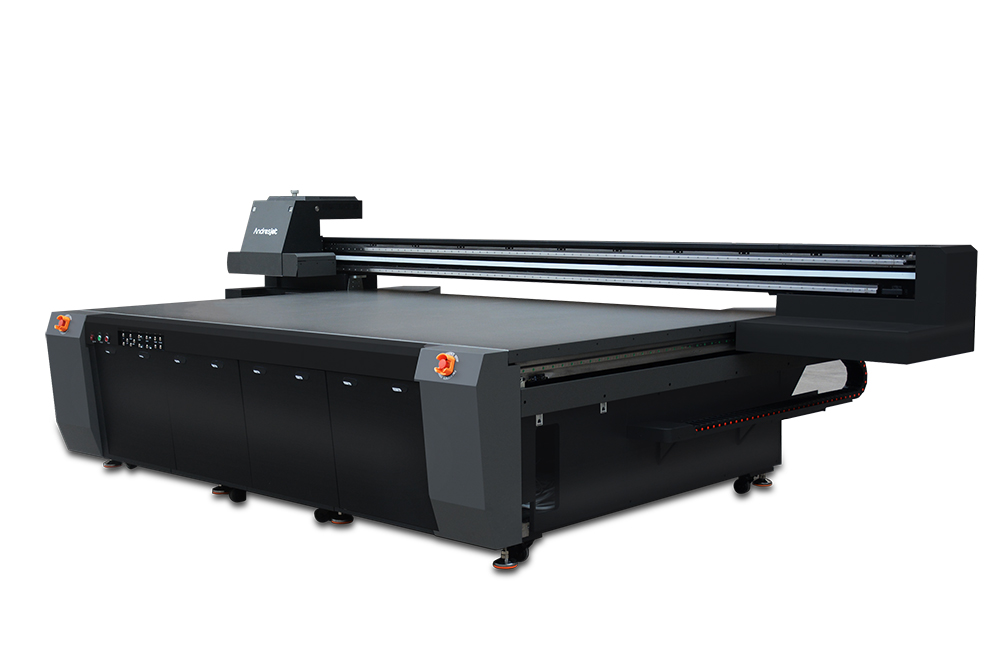UV Flatbed Printer: Advantages and Disadvantages
UV Flatbed Printer: Advantages and Disadvantages
In the realm of digital printing technology, UV flatbed printers have emerged as a versatile and efficient solution for producing high-quality prints on various substrates. These printers utilize ultraviolet (UV) light to cure ink instantly, enabling them to print on a wide range of materials including glass, plastic, metal, wood, and more. The UV flatbed printing process offers several advantages over traditional printing methods, but it also presents some drawbacks. This article explores the advantages and disadvantages of UV flatbed printers, providing a comprehensive overview for those considering this technology for their printing needs.

Advantages of UV Flatbed Printers
Versatility in Substrate Compatibility:
UV flatbed printers are renowned for their ability to print on almost any flat surface. This versatility stems from the UV-curable inks used, which adhere to various materials without the need for pre-treatment or special coatings. This makes UV flatbed printers ideal for printing on substrates such as acrylic, polycarbonate, PVC, aluminum, and even flexible materials like leather and fabric, expanding the range of applications significantly.
High-Quality Prints:
The prints produced by UV flatbed printers are known for their exceptional quality, sharpness, and durability. The instant curing of UV inks ensures vibrant colors and crisp details, resulting in visually appealing outputs. Additionally, UV inks are resistant to fading, scratching, and chemicals, making the prints suitable for both indoor and outdoor use.
Environmental Friendliness:
Compared to solvent-based inks, UV-curable inks emit lower volatile organic compounds (VOCs), reducing their environmental impact. UV printing is a more eco-friendly option as it minimizes waste and pollution during the printing process. Furthermore, the lack of solvents in UV inks eliminates the need for ventilation systems, creating a safer working environment.
Cost-Effective for Short-Run Jobs:
UV flatbed printers are highly efficient for short-run production, allowing for quick turnaround times and minimal setup costs. This makes them an attractive option for businesses that require frequent changes in design or small batch production. The ability to print directly onto the substrate without the need for plates or screens further reduces costs and waste.
Enhanced Productivity:
UV flatbed printers can achieve faster printing speeds compared to traditional methods, especially when printing on rigid substrates. The instant curing process enables immediate handling and stacking of printed materials, accelerating the overall production process. This increased productivity is crucial for businesses operating under tight deadlines.
Disadvantages of UV Flatbed Printers
Initial Investment:
The upfront cost of UV flatbed printers can be significantly higher than that of traditional printing equipment. The advanced technology, precision components, and specialized UV inks contribute to the higher price tag. Small businesses or startups may find it challenging to justify the initial investment, especially if they have limited printing needs.
Operational Costs:
While UV inks offer numerous advantages, they are generally more expensive than conventional inks. The cost per liter can be several times higher, impacting the overall operational costs. Additionally, the power consumption of UV lamps and the need for regular maintenance can further add to the expenses.
Limited Print Size:
UV flatbed printers are designed to print on flat surfaces within a specific size range. This can be a limitation for applications that require large-format printing or printing on irregularly shaped objects. Businesses with such requirements may need to invest in additional equipment or explore other printing technologies.
Ink Curing Challenges:
The UV curing process, while efficient, can be sensitive to temperature and humidity variations. Inconsistent curing can result in adhesion issues, ink cracking, or reduced print quality. Maintaining a controlled environment is crucial to ensure optimal print outcomes, which may require additional investments in climate control systems.
Health and Safety Concerns:
Although UV inks are generally considered safer than solvent-based inks, the UV curing process involves exposure to ultraviolet light, which can be harmful to the skin and eyes if not properly managed. Operators must wear protective gear and adhere to safety protocols to mitigate these risks.
Conclusion
UV flatbed printers offer a compelling combination of versatility, high-quality output, and environmental benefits, making them a valuable addition to many printing businesses. Their ability to print on a wide range of substrates, produce durable prints, and operate cost-effectively for short-run jobs sets them apart from traditional printing methods. However, the initial investment, operational costs, limited print size, ink curing challenges, and health and safety concerns are factors that must be carefully considered before adopting this technology.
Businesses evaluating UV flatbed printers should assess their specific printing needs, budget constraints, and long-term goals to determine if the advantages outweigh the disadvantages. In many cases, the investment in a UV flatbed printer can yield significant returns through expanded printing capabilities, improved print quality, and enhanced customer satisfaction. As technology continues to advance, UV flatbed printers are poised to play an increasingly important role in the digital printing industry, offering innovative solutions for a wide array of applications.
